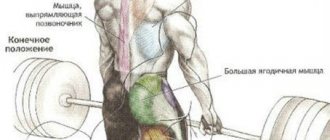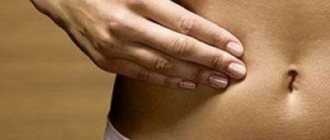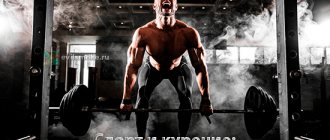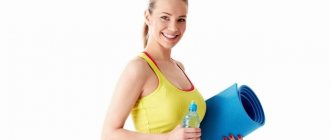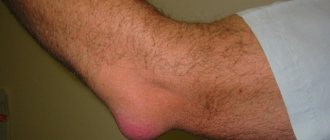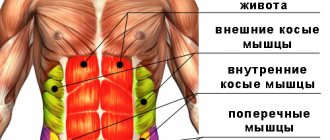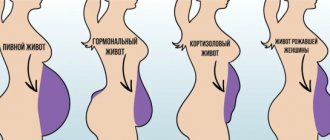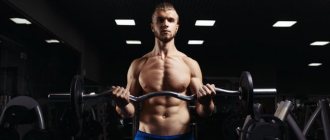Lower back pain after exercise is a condition that is familiar to every person. Both professional athletes and ordinary people who prefer to engage in fitness face it. The lumbar spine is a weak area for any physical activity, both during intense sports and during daily household stress. This can be explained by the fact that the lower back is the center of our body, its supporting point. Most often, pain in the lower back is caused by a weak muscle corset, which is not able to properly support the spinal column. Incorrect posture also worsens the general condition. In professional athletes, the lower back is often overloaded due to regular exercise.
State Description
If the lower back hurts badly after a workout, then a person cannot get out of bed normally, moves in a bent position, and even breathes normally in this condition is very difficult for him. Many people develop pain in the back due to poor body fitness.
But it should be noted that athletes are not protected from this condition. Bodybuilders, for example, with age begin to feel severe stabbing pain in the spine after training; unbearable pain occurs even when trying to simply bend forward. Therefore, we can conclude that lower back pain can occur in any person, regardless of whether he plays sports or not.
In weightlifters, back injuries most often occur in the lower spine and lower back. Unpleasant sensations range from mild short-term attacks of pain to long-term acute pain. Causes of lower back pain after exercise can be associated with severe muscle strain, disc damage, age-related changes in bone tissue, poor posture, and poor technique for lifting heavy objects in the gym.
To prevent the occurrence of such a situation, as well as various complications, it is necessary to determine the mechanism of development of the pain syndrome and its main symptoms.
Back pain after training and physical activity
Regardless of whether you are a beginner or a professional athlete, everyone can experience back pain after training. Nevertheless, the pain of pain is discord. Oddly enough, muscle soreness after any workout, especially if you work out in the gym, is a completely normal process that has physiological justifications.
Pain associated with an increase in the level of lactic acid in the muscles during good physical activity is absolutely harmless and does not require special treatment. At the same time, quite often pain syndrome may occur due to injury or exacerbation of some disease.
When should you sound the alarm?
To know when to sound the alarm, you need to understand the difference between physiological and pathological pain. Let's look at the signs that indicate that back pain after exercise is normal:
- Painful sensations are caused by intense production of lactic acid in the muscles.
- As a rule, they begin the next day.
- Painful sensations of a mild nature.
- They are expressed more in the part of the body that received the greatest physical activity.
- They are noted during movement, while at rest they are practically absent.
- They gradually subside and stop completely disturbing you after a couple of days.
Every athlete is sure that if nothing hurts after the gym: neither your back, nor your arms, nor your legs, then the training was in vain.
However, no one is immune from the appearance of pain associated with injury or exacerbation of any disease. Features of pathological pain that occurs during or after training:
- Injury to the musculo-ligamentous system is the most common cause of the development of this type of pain.
- Appears immediately after performing an exercise or movement.
- The painful sensations are acute.
- May spread to other areas of the body.
- They are felt both during movement and at rest.
- Often there is an increase in pain the next day.
- Continues for a long time.
Causes of back pain
It is reliably known that back pain after training, in particular in the lower back, can be associated not only with improper physical activity, leading to various types of injuries, but also with the emergence or exacerbation of a pathological process in the body. We list the most common diseases and conditions that can provoke pain during or after training:
- Inflammation of muscle fibers – myositis. Quite often observed in people experiencing prolonged physical activity.
- Herniated intervertebral discs. Physical activity can lead to displacement of the cartilage layer located between the vertebral bodies and cause very intense pain.
- Pinched nerve roots. Displacement of the vertebrae, severe muscle spasm, unstable intervertebral discs due to increased physical activity can cause pinching of the spinal nerves and roots.
- Various curvatures of the spinal column. If you have a spinal deformity of any severity, then during physical activity you may experience back pain.
- Underdeveloped muscular-ligamentous apparatus of the spinal column.
If you doubt that you have physiological pain after exercise associated with the production of lactic acid, it is better to consult a doctor to find out the true cause.
Emergency help
What to do and how to relieve lower back pain after training? There are several simple rules that will help you alleviate the condition. Naturally, these are temporary methods and should be considered as emergency assistance. In most cases, when pain occurs, you should do the following:
- Stop the exercise or movement immediately.
- Take a position in which pain will be minimal.
- You must wait until the pain subsides.
- If the pain does not decrease, you should no longer exercise today. Continuing to exercise will only increase the pain syndrome and significantly worsen the current condition.
- To relax your muscles and relieve tension, it is better to lie down on a flat, hard surface.
- A cold compress will help reduce pain. You can apply ice or cooled objects. At this stage, hot or warm compresses, such as a heating pad, are strictly contraindicated.
Many people immediately begin to massage the painful area of the body. This is not recommended as it will only make the pain worse. At first, all you need is peace.
When to see a doctor?
In some cases, professional medical help should not be neglected. Due to various circumstances, many people who work out in gyms try to get rid of pain on their own, forgetting that a specialist can do this more efficiently and quickly. Let's look at the most common situations when you should not delay visiting a doctor:
- Severe intense pain of an acute nature.
- In addition to pain, there is a pronounced limitation of movements.
- All the measures taken do not alleviate the condition.
- The next day there is a significant increase in pain.
- There is a serious deterioration in general condition.
- The back pain continues for five or more days.
- Other clinical symptoms appear (for example, movement disorders or impaired skin sensitivity).
- Self-therapy did not bring the desired results.
- The acute pain passed, but after a while periodic or constant pain appeared in the back or other part of the body.
Sometimes the simplest injuries left unattended can lead to the development of chronic pathology.
Treatment
If your back muscles hurt after physical activity, then on the first day you will need three things: cold, rest and painkillers. Non-steroidal anti-inflammatory ointments, gels and creams are widely popular as local therapy. You can treat painful areas of the back with the following external means:
- Dolgit.
- Capsicam.
- Finalgon.
- Nicoflex.
- Butadion.
- Voltaren.
- Fastum gel.
- Ketorol.
To reduce pain, it is also recommended to take nonsteroidal anti-inflammatory drugs orally (Voltaren, Ibuprofen, Nurofen, Ketonal, etc.). In addition, they often resort to using pepper plaster. It should be noted that among the contraindications only hypersensitivity to the components of the drug. Pepper patch is quite convenient to use. Remove the protective film and apply it to a dry, undamaged area of skin in the area of greatest pain.
From about the second day you can start making compresses with dimexide in combination with other medications (for example, novocaine). Various physiotherapeutic procedures and therapeutic massage are highly effective. The following types of physiotherapy are most often prescribed:
- Electrophoresis.
- Ultrasound therapy.
- Magnet.
- Laser.
- Reflexology.
- Mud applications or compresses.
- Balneotherapy.
- Acupuncture.
For back pain, manual therapy has proven itself well, helping not only to relax the back muscles, but also to improve the functional state of the spinal column.
Signs of developing discomfort
Do your lower back muscles hurt after training, do you experience weakness, fatigue, a general feeling of malaise, or numbness? These are all serious symptoms to worry about. This condition may indicate problems with the bowels or bladder. In order not to bring the disease to a dangerous stage of development, it is important to promptly consult a doctor who will help prescribe effective treatment.
Regular back pain in a child is also a serious cause for concern. Most often, this condition occurs in childhood due to wearing heavy things and problems with posture. But acute pain syndrome can also be a sign of a serious illness: scoliosis and even tumor formation.
When back pain does not require medical intervention
Not all cases of pain after physical activity indicate complex pathologies or injuries requiring medical intervention. When can you not worry, and unpleasant sensations are considered temporary and arise due to a normal reaction of the body?
- Pain appears after intense exercise: sports activities, physical labor, etc. It must be emphasized - not critical, but intense.
Your back may hurt after intense physical activity - this is completely normal.Critical loads can cause mechanical damage to the intervertebral discs or the discs themselves, pinching of nerve fibers, and rupture of muscle tissue. Often such consequences require contacting medical institutions. The concept of physiological pain refers to the unpleasant sensations that arise due to an increase in the concentration of lactic acid. It is not removed from the body in a timely manner, and pain appears with repeated strain on the back muscles. But on the third or fourth day, the symptoms disappear on their own, and the body completely restores its physiological capabilities.
- If back pain is local, it only bothers you in one place. The reason is that certain back muscles were damaged as a result of the blow. During rest, a person feels normal, but with any movement or stress on the back, pain appears. If the described symptoms disappear after two to three days, then there is no need to worry. If the pain is felt for a longer period, then this indicates serious damage not only to soft tissue, but also to bone tissue and requires medical intervention.
If the pain goes away within a couple of days after the blow, there is nothing to worry about.
Discomfort in ligaments and muscles
Pain in the ligaments usually manifests itself both at rest and during movement, but when moving, the pain syndrome only increases.
As a rule, the lower back hurts after back training due to sprained ligaments or muscles. This condition can be prevented by developing muscles and strengthening the spine. Even people who have previously been injured while playing sports can significantly improve their condition and strengthen their muscles.
Professional athletes know that the simultaneous work of antagonist muscles is very important when training. This is especially true for those who have serious back problems. To prevent post-workout pain, it is important to try to evenly distribute the load on the spine while playing sports. This means that doing 300 squats in order to strengthen the abdominal muscles is incorrect and even dangerous to health. The trainee must evenly distribute the entire load on the spine, this also applies to antagonist muscles.
Some types of exercises are prohibited for persons with osteochondrosis. Weightlifting, which puts a lot of stress on the spine, can only aggravate the pain syndrome. It is important to exclude or carefully monitor the following types of exercises: leg press from a seated position, deadlift, lunges with a load on the shoulders, military press.
Professional athletes have a well-trained body, so the likelihood of injury or some kind of complication in their case is minimal. Beginners in the sport should pay special attention to the technique of lifting weights, since performing the exercises incorrectly can cause serious health problems. If your lower back hurts after working out your abs, then it is important to reduce the weight you lift or the number of repetitions.
Back training for healthy people and those suffering from herniated discs
The back muscles need a constant reasonable load no less than the rest of the muscles, or even more. After all, humans are the only mammal whose entire spine is in a vertical position when awake.
As a result, the load on the spine is much greater than in other living beings, which often causes diseases that doctors call “the price to pay for walking upright.”
Back training is one of the most important methods of strengthening muscles and partially relieving the load on the spinal column.
Back pain after exercise: “right” and “wrong”
Experts say: with a responsible approach to physical education, your back always hurts after training.
Most often, painful sensations are observed in the lumbar region: there are a large number of nerve endings there, and at the same time, it is this part that is most intensively involved during exercise.
Muscle pain is a sure sign that the body has received the load it needs to maintain tone and build strength.
But at the same time, sometimes excessive loads or incorrectly performed movements can cause injuries, which are also accompanied by pain.
How can you tell if your back hurts “correctly” or if something went wrong? There are several differences that will help you understand whether your muscles are behaving normally, and, accordingly, what to do if your back hurts after training.
Natural soreness occurs due to the fact that lactic acid accumulates in the muscles due to intense exercise. Signs:
- sensations appear only the next day after physical education;
- the pain is dull and monotonous;
- pain is observed only in the place that was “overworked” when performing motor techniques;
- pain occurs only when moving, it is absent at rest;
- the sensations go away without treatment within two days.
If your back hurts after training as a result of an injury (most often smaller and weaker muscles are damaged), then the following picture is observed:
- symptoms occur sharply, suddenly, as soon as a person makes a movement that causes injury;
- the pain is acute;
- pain may radiate to other parts of the body, for example, to the leg;
- the pain does not go away in any condition, without weakening with rest;
- the sensations last for quite a long time, and even increased pain may be observed.
How to behave correctly when a symptom appears
If there is a normal accumulation of lactic acid, there is no need to do anything, no procedures, but a light load will be very useful: it “starts up” microcirculation.
Lactic acid leaves the muscles faster, the person feels better.
Traumatic pain does not necessarily signal severe damage: most often it is micro-tears of small intervertebral muscles or spasm in the muscle tissue of the lower back.
The cause of such injuries can be the start of exercise without preliminary warming up, “warming up” the muscles, that is, stimulating blood circulation in the muscles. Warm muscles are more elastic, while cold muscles are more rigid.
The following may also cause injury:
- lifting excessive weight;
- incorrect technique for performing individual exercises;
- movement is too sudden or fast.
What to do if your back hurts after training as a result of muscle fiber damage? Experts give some advice:
- temporarily stop exercising;
- find a position in which pain is felt less, and stay in it;
- to relieve symptoms (including swelling), apply cold to the sore spot; It is best to apply dry cold (ice in a special rubber bladder).
The same measures will help when your neck hurts after training. But it should be remembered that intervertebral hernia most often occurs in the cervical and lumbar regions.
And therefore, it is better not to engage in any self-medication, limit yourself to applying cold and consult a doctor.
Features of exercises for intervertebral hernia
This disease is localized primarily in the lumbar and cervical spine, and treatment can be either conservative or surgical.
But in both cases, a reasonable dosed load on the spine in the form of a system of exercises is necessary. They can either be part of conservative therapy or be part of a complex of restorative therapy after surgery.
Sets of exercises during conservative treatment are aimed at forming the so-called muscle corset, which is a group of muscles surrounding and supporting the spine.
But surgical treatment also includes this type of physical activity, such as training in the gym after removal of an intervertebral hernia.
There are immutable rules for such physical exercises. The main one is training the back muscles. In this case, it is movement without pain. Under no circumstances should you start exercising if you have pain.
For the rest:
- Only the attending physician should prescribe classes and determine the exercise system;
- the techniques performed should not cause sharp painful manifestations, but slight discomfort is acceptable, moreover, in most cases it is inevitable;
- Initially, you should not resort to techniques that involve sharp bending of the spine;
- Pushing and hitting in the back are unacceptable, and jumping is also undesirable.
If your spine hurts after training, you need to give it a rest for a day, and if the pain does not go away, consult a doctor.
Watch the video: Cause of disc herniation. Swimming and the spine
Source: griju.net
Features of the exercises
When performing exercises to strengthen the muscular skeleton and spine, emphasis should be placed on the oblique, transverse, lumbar and rectus abdominis muscles, as well as the quadratus lumborum and paraspinal muscles of the back.
Many pain sensations can be eliminated using traditional treatment methods: proper rest, the use of cold and warm compresses, and taking medications. If the pain syndrome continues for several days, and the patient develops weakness and a feeling of malaise, then it is important to immediately see a doctor.
Some causes of back pain associated with the spine may go undetected for a long time. The attending physician will help you choose an effective method of treating the spine and eliminating pain.
Is it worth loading the spine if pain occurs?
The question is very individual, the answer depends on the type and intensity of pain. The only correct way of life is mandatory movement, and if possible, playing sports. This does not mean elite sport, when in order to win you have to cause serious harm to your health, including your spine. You need to do physical exercise to improve your health, you don’t need to set any records.
Sports exercises should be enjoyable and fatigue should be moderate.
Complete cessation of movement when pain occurs is recommended only in the acute period; in the future, taking into account the condition, motor movements of varying intensity can be started.
If your back pain is not acute, you shouldn’t stop moving.
Refusal of exercise has one goal - to eliminate the provoking factor of pain. Proper treatment will not only get rid of the pain that has arisen, but also prevent its occurrence in the future as much as possible.
Discomfort in the lower back
Why does my lower back hurt after back training? The most common cause of this condition is improper exercise technique. When training, the body should resemble a straight and even line, and the lower back should be located at the same level as the legs and torso. Incorrect position of the lower back during exercises often provokes severe pain. In this case, you should immediately stop exercising, otherwise muscle discomfort may lead to the development of serious complications.
In addition, lower back pain can develop with different types of dynamic planks. The technique for performing each type of plank can differ significantly - some of them involve raising and lowering the spine, which provokes pain.
Possible pathologies
If your lower back hurts after physical activity, a possible cause of pain could be a pathological process developing in the body.
Osteochondrosis
This disease is a complex of disorders in articular cartilage. Athletes often experience lower back pain after deadlifting for this very reason. It is characterized by sharp, shooting pains in the lumbar region. Quite often it is accompanied by problems with the urinary tract. This disease is diagnosed by a neurologist using CT and radiography.
To eliminate symptoms and improve general condition, magnetic and laser therapy, as well as manual manipulation, are used.
Protrusions
This disease is a complication that occurs against the background of the development of osteochondrosis. It is characterized by protrusion of the disc beyond the intervertebral space. The complication causes the appearance of chronic aching pains, followed by shooting pains. Impaired sensitivity and mobility of the spine are also diagnosed. To make such a diagnosis, you need to contact a neurologist and undergo an MRI. To eliminate symptoms, drug treatment is used, however, only lifestyle changes will help to radically solve the problem.
Intervertebral hernia
When a herniation occurs, the core of the intervertebral disc is displaced and this process is accompanied by rupture of the fibrous ring. This condition is considered irreversible. A hernia is characterized by the appearance of pain in the leg and in the lumbar region, and walking may be impaired. The pain may worsen with physical activity. The fact of rupture of the fibrous ring is determined by a neurologist during an MRI.
During this period, a specialist may prescribe painkillers.
Spondylosis deformans
This disease refers to the displacement of the vertebrae, leading to deformation or narrowing of the spinal canal. The pain is observed in the lumbar region, is aching in nature, and intensifies with training. For diagnosis, the neurologist prescribes a CT or MRI for the patient, and radiography is also possible. Treatment is aimed at eliminating symptoms and includes medications, as well as warming procedures and exercise therapy.
Problems of internal organs
Often this phenomenon is typical for those people who are actively losing weight. With a sharp decrease in body fat, the placement of internal organs may change, the kidneys are especially susceptible to this phenomenon. Problems with internal organs are characterized by acute, sharp pain. Therefore, if you have lost weight and your lower back hurts after squats, you should consult a therapist. The doctor will prescribe an ultrasound to determine the condition of the internal organs.
As a therapeutic measure, a high-calorie diet is used; in difficult cases, surgery is necessary.
Discomfort in the back
The back, including the spine, bears the brunt of the load during training. It is for this reason that you should not be very surprised at the occurrence of pain in this area. If unpleasant symptoms appear, it is important to immediately stop doing the plank and get proper rest. Continuing training is dangerous for the development of progressive back pain, as well as the appearance of diseases: kyphosis, scoliosis, hyperhidrosis.
Also, the back can be injured when performing a dynamic plank. Incorrect sudden movements, as well as poor technique, can cause damage to the vertebrae or problems with the nutrition of the intervertebral discs, which can have serious consequences for human health.
Causes of pain
The causes of discomfort vary depending on your general health and level of physical fitness.
Pain in the muscles of the spine
Sedentary work and a sedentary general lifestyle cause degradation of the back muscles.
Pain in the muscles of the spine
In a normal physiological state, these are very strong muscles, capable of supporting not only body weight for a long time, but also additional dynamic and static forces that arise during labor or exercise. If muscles are not used taking into account their purpose, then the body considers them unnecessary, and the tissues gradually degrade. As a result, not only lower back pain, but also poor posture and other changes in the body.
Changes may also affect posture
What is lactic acid
With a sharp increase in loads, the muscles cannot cope with this mode of functioning, the tissues cannot withstand it, micro-tears and other mechanical damage appear. Lactic acid is a breakdown product in the muscles; it is always present in the tissues and is constantly excreted in the bloodstream.
Lactic acid formation in muscles
But this only happens in two cases:
- muscles in their usual state. There are no overloads that cause microtrauma to tissues, causing a sharp increase in lactic acid and deterioration of blood flow. During ruptures, the ability of blood flow in the capillaries is disrupted, the intensity of lactic acid removal is further reduced, and its total amount increases;
Back muscles - trained muscles are subjected to excessive critical loads. Such lower back pain is felt by athletes who violate the recommended loads during training. The second reason is an incorrectly developed training plan.
Improperly organized training process can often result in injury.
Most of the acid is eliminated from the body within a short time after cessation of exercise, but this only happens in cases where the effort corresponds to the capabilities and training of the muscles. Lower back pain caused by lactic acid appears only during exercise; no discomfort is observed at rest.
Low back pain caused by lactic acid occurs only during exercise
Systematic and correctly scheduled training of the back muscles allows the body to quickly cope with the disposal of excess acid concentration, pain is significantly reduced and after 2-3 days disappears completely.
Elimination of discomfort
What to do if your lower back hurts after training? It is important to remember that you should stop exercising immediately after the first unpleasant symptoms appear. It is important to take a relaxed position, rest, and assess the severity of pain. Perhaps it only manifested itself due to a muscle spasm or minimal overexertion, but there is a risk of real health problems.
In addition, it is important to pay special attention to the training technique. After a correctly performed exercise, back pain and strain do not occur.
When to go to the doctor
If your back suddenly hurts during training, you need to urgently take a number of actions to minimize the negative consequences.
- First of all, immediately stop doing the exercise and take a position that is comfortable for you. Most often this is a lying position in the fetal position or on the back.
- Apply ice to the damaged area. Do not apply anything warm, as this will only worsen the condition.
- Try not to move until your condition improves.
If it is not possible to visit a doctor on the same day, then rub the damaged area with a special cream or gel.
If the pain has not subsided the next day, visit your doctor immediately. Be sure to tell your doctor that you have lower back pain after working out at the gym, as this will help make a diagnosis faster.
You should also visit a doctor if you have pain after training and you do not associate it with a back injury, but the pain does not subside. Remember that any prolonged or severe pain is a reason to consult a doctor.
And even if the pathological cause of the symptom is not confirmed, hudeem-bez-problem.ru is sure that you will feel calmer.
Compliance with training rules
When conducting training, a person must follow the following rules:
- handle cargo and heavy objects carefully;
- regularly consult with a trainer (at least in the first 6 months of training in the gym);
- wear comfortable, loose clothing and shoes during training, which will help prevent the development of injuries;
- drawing up a proper diet with plenty of calcium in foods (it will help improve bones) and protein (it effectively affects weight and strengthens the muscle corset).
If back pain appears unexpectedly after working out in the gym, you should not panic too much. It is important to listen to the state of your body, reduce the physical stress on the body, which it cannot fully cope with at this stage.
If your lower back hurts after strength training, it is important to see a doctor immediately. It is dangerous to carry out self-treatment, since such a lesion in the back can be eliminated with the help of compresses and local medications, which would be very dangerous for other types of injuries.
Other reasons
Often unprepared athletes encounter pain in the lumbar region caused by insufficient physical development of the body. If your lower back hurts when running, this may indicate that the lower back muscles that bear the load are not developed enough. You can get rid of the unpleasant sensations that arise after jogging by strengthening your muscle corset.
Pain often occurs after various physical activities, for example, after swimming, fitness, football, planking.
Such pain is caused by a significant load on the back muscles when performing individual exercises. If the sensations are not sharp and appear a day after training, this indicates that the muscles are working.
As for pain after weightlifting exercises: deadlifts, squats with weights, they can be caused by improper execution of the exercises, which leads to muscle strain. If your lower back hurts after deadlifting, you need to stop physical activity and reconsider the correctness of the exercises.
Pain can be provoked by yoga, stretching, and hyperextension classes in the early stages. Most often this is due to insufficient muscle preparedness.
The soreness goes away without much impact within a few days.
Basic Rules
When engaging in active sports, it is important to adhere to the following rules:
- Move more. Adopting a healthy lifestyle, monitoring your weight, actively playing sports, and avoiding sedentary activities will help reduce the risk of back injuries and pain. The more a person moves, the better the condition of his body.
- Stop smoking. Nicotine in cigarettes negatively affects the structure of intervertebral discs, changing it and leading to rapid dehydration. As a result, the discs lose their strength and wear out quickly.
- Maintain correct posture. Some people, due to their professional activities, often have to spend a lot of time in a sitting position. Some experts advise placing the computer screen at eye level, the chair should correspond to the person’s height, so that when sitting, the bend angle in the knees reaches 90 degrees.
- Take regular breaks if you have to stay in one position for a long time. You should get up from your desk every half hour and walk around the room for a few minutes to relieve the pressure your spine receives while sitting.
- Try to use your laptop and phone less. With regular use of a mobile phone, when a person’s neck is in an inclined position or turned to the side, the state of posture greatly worsens and additional stress appears on the spine. To prevent such problems, you should purchase a special Bluetooth headset that will help relieve tension in the spine and neck.
Prevention
It is impossible to play sports and avoid pain. This is normal as lactic acid is being produced. But the occurrence of pathological pain can be prevented. To do this, you must adhere to the following recommendations:
- It is necessary to load the body gradually.
- Loads must be dosed.
- During training, pay attention to all muscle groups.
- Increase the duration of the workout gradually.
- Before each workout, a warm-up is required.
- If you have problems with the spine or joints, it is better to conduct classes under the supervision of an instructor.
Correct posture
Watch your body position while sleeping. Doctors advise sleeping on your side and on a firm mattress. The position should be as comfortable as possible. The fetal pose helps eliminate tension in the hips and relieves fatigue. The worst position for sleeping is considered to be on the stomach; it provokes the development of spinal curvature.
If pain in the back develops, you should immediately stop training and perform incorrect exercises. The back should fully rest and recover. Also, if your back hurts in the lumbar region after training, it is important to visit a doctor who will prescribe anti-inflammatory drugs and prescribe optimal recovery for the patient’s body.
Pain Treatment Methods
If your back hurts after swimming, running, yoga or other physical activity, and this is due to muscle weakness or lactic acid production, therapy does not require complex procedures:
- after exercise, the tense area can be lubricated with “Finalgon” or other warming, relaxing and analgesic gels;
- Some patients are helped by warm or cool compresses, but they can be done without completely eliminating the risk of inflammation;
- If you feel tension in your lower back after exercise, you can do a light massage at home or visit a massage therapist.
The situation is different with pathologies that cause pain. If it is a hernia or osteochondrosis, complex therapy is required using several types of drugs: chondroprotectors, muscle relaxants, NSAIDs, analgesics.
If the cause is a compression fracture, consultation with a surgeon is required. Treatment for this injury requires complete restriction of movement and vertebroplasty, an operation in which a thin metal rod is inserted into the spine. The second method of treating a compression fracture is kyphoplasty, which restores the height of the vertebrae through incisions and the introduction of a special balloon.
Treatment
To relieve the intensity of pain in the lower back after exercise, you should follow two recommendations: remove the cause and use painkillers. When it doesn’t help, you need to see a doctor.
As local therapy, it is recommended to treat the lumbar area with Dollit, Finalgon, Butadion and other ointments and gels of identical action.
"Finalgon"
The list of means is very wide, but in terms of effectiveness they are no different from each other. The existing difference in cost is explained by the popularity of the brands and the success of the manufacturers' advertising campaigns. Inflammatory processes in nerve fibers are treated with non-steroidal drugs.
There are a lot of ointments for back pain. Everyone has a different composition and active ingredients. Some drugs cool, others instantly warm, and from others you will have to wait a very long time for the analgesic effect. To choose the right ointment, we recommend reading the detailed article on our website.
Diagnostic methods
Without a correct diagnosis and determination of the causes of pain, their successful localization or elimination is impossible.
The most common causes of back pain during exercise
Unfortunately, a lot of pain appears due to serious back diseases; physical activity only makes their clinical course more acute. The most common causes of back pain when exercising are considered to be:
- Myositis. Chronic or acute inflammation of muscle fibers, often found in people who do not exercise and lead a sedentary lifestyle.
Symptoms of back muscle myositis
- Herniated intervertebral discs. During exercise, the pain is strong, sharp, and fades over a long period of time. These are very serious disorders of the functionality of the spine. Physical stress can cause their partial displacement or destruction of the shell. It is strictly not recommended to engage in massages or other traditional methods of self-medication; consultation with a doctor is mandatory.
Symptoms of lumbar disc herniation
- Pinched nerve fibers. Incorrect position of the spine during physical activity can lead to pinched nerve fibers. Pain of varying intensity appears, subsiding with rest. As a rule, complex treatment is prescribed: medication to relieve inflammation and physical therapy to restore the position of nerve fibers and strengthen the muscle tone of the back. Only strong muscles can guarantee that in the future the vertebrae will not shift and pinch the nerves.
Nerve entrapment in the lumbar spine
- Curvature of the spinal column. Physical activity is distributed unevenly; concentration points appear in some areas, which causes severe pain. You need to know that curvature of the spine has a negative impact not only on the vertebrae, but also on all internal organs of a person.
Description of pain in lumbar scoliosis
- Stretching of muscle tissue. It is accompanied by severe pain; when stress is removed, the symptoms disappear in a short time.
Characteristic symptoms of a sprained back muscle
If, in addition to pain, a sharp limitation in the amplitude of movements and a deterioration in the general condition of the body is noticed, then you need to visit a nearby medical facility as soon as possible to make a diagnosis and select a treatment regimen.
6. Pain in the lower back after rest due to diseases of the internal organs
If you notice that your lower back begins to hurt more and more often after you get enough sleep, and even gets to the point that you cannot get out of bed, then it is recommended to consult a doctor. Such morning pains can be caused by diseases of the internal organs, mainly diseases of the kidneys and pancreas, less often the genitourinary system. Because of the kidneys, the lower back will hurt, because the kidney tissue swells and the integrity of its capsule is violated, since there are many nerve endings here. When a person sleeps, he is in a motionless state, so the kidney moves differently, and, accordingly, does not give pain symptoms, but in the morning, during activity, the tense capsule is injured and radiates to the lower back, sometimes with very sharp pain.
